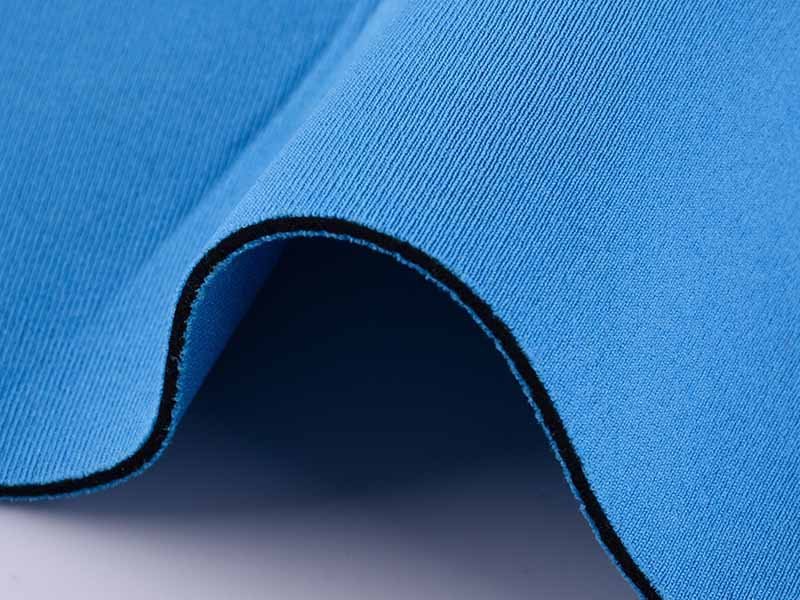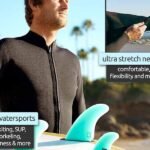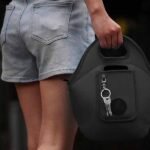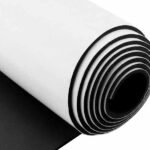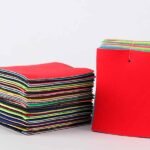Neoprene has become one of the most versatile materials in the manufacturing world, widely used in everything from wetsuits to bags and accessories. Whether you’re designing a custom neoprene bag or creating a high-performance wetsuit, understanding the neoprene manufacturing process is crucial for producing products that are durable, functional, and aesthetically pleasing.
The neoprene manufacturing process involves several steps, including material selection, blending, shaping, and finishing. It begins with sourcing high-quality neoprene, followed by the process of molding and cutting it into desired shapes. For custom products like bags and wetsuits, manufacturers offer tailored options such as thickness, texture, and design elements. Ensuring quality at every stage is essential for achieving flexibility, durability, and customer satisfaction.
From the initial material choice to the final customization details, every step impacts the final product’s performance and look. Understanding these stages helps brands make informed decisions about their custom neoprene needs, from designing unique bags to ensuring superior functionality in water sports gear. Ready to dive deeper into neoprene production? Keep reading to unlock expert insights that will help your business thrive in the competitive custom product space.
What Is Neoprene and Why Is It Used in Manufacturing?
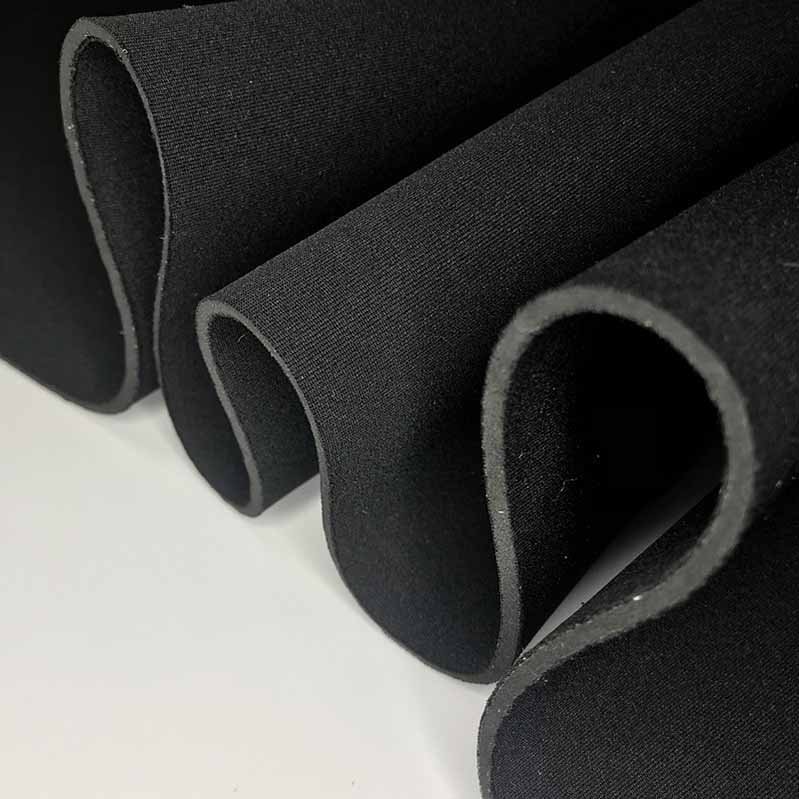
Neoprene, also known as chloroprene rubber, is a synthetic rubber known for its durability, flexibility, and resistance to water, oils, and chemicals. These properties make it ideal for a wide range of custom products, including neoprene bags, wetsuits, and accessories. Manufacturers use neoprene for its versatility in high-performance environments, ensuring products stand up to wear and tear in harsh conditions.
Neoprene’s popularity in manufacturing stems from its unique blend of properties that allow it to withstand harsh conditions while maintaining flexibility and comfort. First synthesized in the 1930s, neoprene is now an indispensable material in industries ranging from fashion to industrial applications. Here’s why neoprene continues to dominate custom product manufacturing:
Durability and Longevity
Neoprene is known for its excellent weather resistance, meaning it doesn’t easily degrade under exposure to UV rays or ozone. This makes it perfect for outdoor and aquatic environments, ensuring that products like wetsuits and bags can withstand repeated use and exposure to the elements. Its ability to retain its flexibility after years of use is a key reason it’s commonly used in products that need to last, such as neoprene covers and protective gear.
Water Resistance and Insulation
Neoprene’s closed-cell structure helps trap air pockets within the material, making it a great insulator. This is why it’s widely used in wetsuits to keep wearers warm in cold water. It also ensures that neoprene bags and accessories remain waterproof, providing reliable protection for their contents, whether on a dive or during outdoor activities.
Flexibility and Comfort
The ability of neoprene to stretch up to 200% of its original size without losing form makes it a highly flexible material. This stretchability is crucial for neoprene gloves, bags, and wetsuits because it ensures that the product fits comfortably and moves with the user.
Customization Opportunities
Neoprene can be easily customized in terms of thickness, color, and texture. It can be laminated, coated, or combined with other materials to enhance its properties. Manufacturers like Szoneier can tailor neoprene for custom applications, ensuring the end product meets specific requirements, whether for sports gear or fashion accessories.
In short, neoprene’s robust characteristics and customization capabilities make it a go-to material for creating products that perform well under extreme conditions, all while offering significant flexibility and comfort.
How Is Neoprene Manufactured?
Neoprene is a versatile synthetic rubber widely used in manufacturing products like wetsuits, bags, gloves, and accessories. Its production process involves several stages, from the synthesis of chloroprene to molding, curing, and finishing. Below is a detailed breakdown of the neoprene manufacturing process:
1. Polymerization of Chloroprene
The first step in neoprene manufacturing is the polymerization of chloroprene, the primary monomer used to produce neoprene. Chloroprene molecules are chemically bonded to form long polymer chains. This process occurs in a controlled environment to ensure the desired molecular structure for the neoprene. The resulting polymer is the foundation for the next stages of the manufacturing process.
What happens during polymerization?
- Chloroprene molecules are chemically linked to form polymer chains.
- The polymer chains determine the flexibility, strength, and other essential properties of neoprene.
2. Blending with Additives
Once polymerized, the neoprene is blended with various additives, such as curing agents, stabilizers, plasticizers, and foaming agents. These additives modify the properties of neoprene, making it suitable for different applications. For example, curing agents help solidify the material during the manufacturing process, while foaming agents can create the closed-cell structure that neoprene is known for.
Why are additives important?
- Additives ensure that the neoprene has the right combination of flexibility, durability, and resistance to chemicals, UV rays, and wear.
- They help adjust the final product’s texture, thickness, and stretchability.
3. Shaping and Molding
Once blended, the neoprene is then shaped into sheets or rolls. The material is either extruded or molded into the desired form, depending on the application. This step is essential for creating the large sheets of neoprene that will be used in products like wetsuits, bags, or accessories.
What happens during shaping and molding?
- The blended neoprene is either extruded or poured into molds to form sheets.
- These sheets are cut into specific shapes based on customer specifications.
4. Curing Process
After the neoprene is shaped, it undergoes a curing process, where the material is heated to a specific temperature to solidify and ensure that it retains its shape and elasticity. This step is crucial for ensuring the final product’s durability and flexibility. During curing, the material undergoes a chemical reaction that strengthens its structure and locks in the desired properties.
Why is curing necessary?
- Curing ensures that the neoprene reaches its full strength and flexibility.
- It also ensures that the material remains resistant to environmental factors like UV exposure and chemical degradation.
5. Laminating and Coating
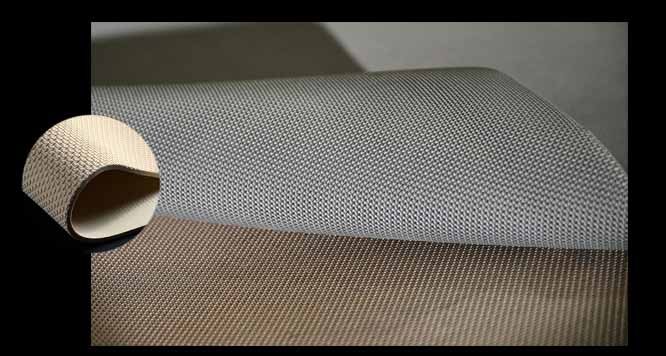
To add extra durability and texture, neoprene can be laminated with other materials such as nylon, polyester, or spandex. The lamination process enhances the neoprene’s external durability, provides a smoother surface, and adds color or pattern to the material. Laminated neoprene is often used for neoprene bags, accessories, and protective covers, where both strength and appearance are critical.
What happens during lamination?
- Neoprene sheets are bonded to other fabrics for enhanced durability and aesthetic appeal.
- This also helps to improve water resistance, making the final product more versatile.
6. Cutting and Shaping for Final Products
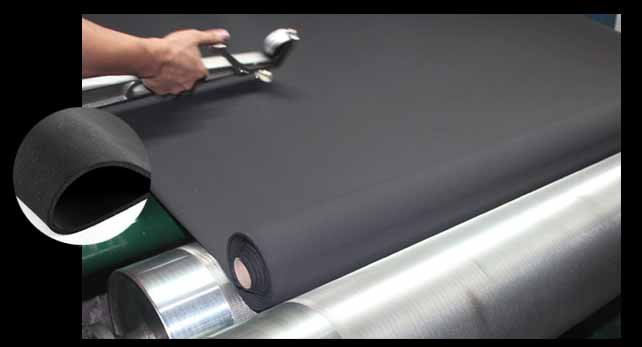
After the neoprene is laminated, it is cut into the required shapes for specific products. For custom products like bags, wetsuits, or gloves, precision cutting technologies such as laser cutting or CNC machines are used. These advanced technologies allow for intricate designs, including custom logos, unique panel shapes, and other personalized features.
How is cutting done?
- Precision tools like CNC machines or laser cutters are used to shape the material.
- These tools allow for detailed cuts, such as custom logo placements or complex product designs.
7. Final Quality Control
Before neoprene products are shipped or sold, they undergo rigorous quality control checks to ensure they meet the required standards. Quality tests include checking for stretchability, water resistance, and overall durability. Manufacturers also inspect for defects such as holes or weak seams. Testing ensures that the final product performs optimally, whether it’s a neoprene wetsuit, a neoprene bag, or any other custom product.
What are the quality checks?
- Stretch and durability tests assess the neoprene’s flexibility and lifespan.
- Water resistance tests ensure the material can withstand wet environments without compromising performance.
- Final inspections check for defects or irregularities.
The neoprene manufacturing process is a highly technical and precise procedure that involves several key stages, including polymerization, blending, curing, lamination, and cutting. Each step is crucial in ensuring the material’s flexibility, durability, and performance. At Szoneier, we offer custom neoprene manufacturing services, providing high-quality products like neoprene bags, wetsuits, and other accessories tailored to your specifications. Whether you’re looking for premium materials, low MOQ orders, or fast sampling, we ensure that each product is crafted to meet your highest standards.
Which Neoprene Types Are Best for Custom Products?
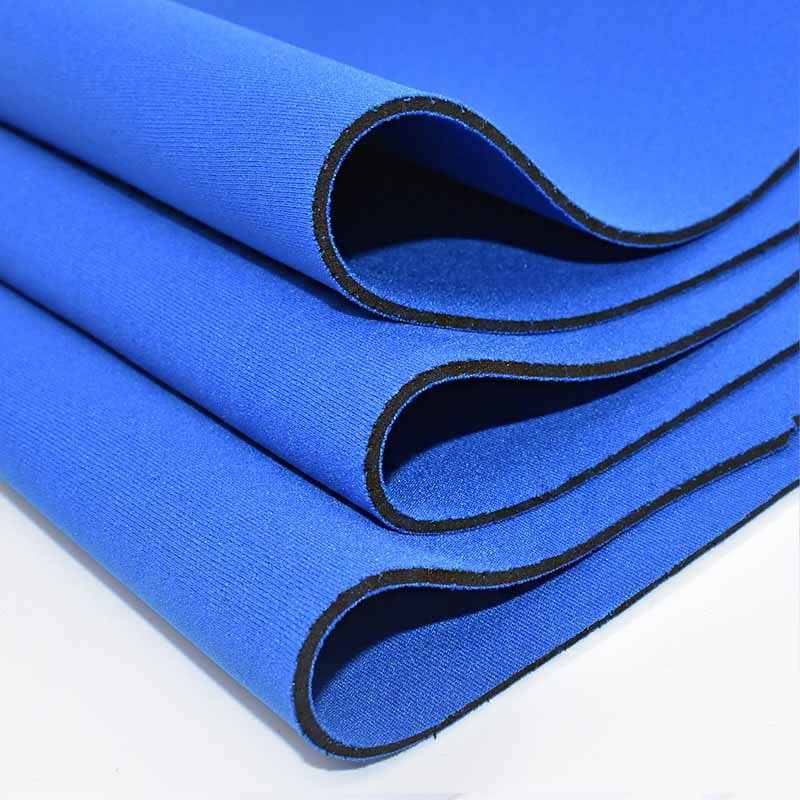
Neoprene types vary based on their formulation and use. CR neoprene is durable and weather-resistant, while SBR neoprene is more budget-friendly. Limestone neoprene is eco-friendly and offers superior stretch and insulation. For custom products like bags, wetsuits, and accessories, the material choice depends on factors like performance requirements, cost, and environmental concerns.
Not all neoprene is created equal. Different formulations of neoprene offer distinct benefits and are suited for various types of custom products:
CR (Chloroprene) Neoprene
- Best For: General-purpose applications like bags, accessories, and diving suits.
- Pros: High durability, weather resistance, and chemical resistance. Ideal for products that need to withstand outdoor environments and harsh conditions.
- Cons: Higher cost compared to other types of neoprene, making it less suitable for budget-conscious brands.
SBR (Styrene-Butadiene Rubber) Neoprene
- Best For: Entry-level products like affordable bags, promotional items, or accessories.
- Pros: More affordable and offers decent durability and stretch.
- Cons: Less water-resistant and prone to faster wear and tear compared to CR neoprene.
Limestone Neoprene
- Best For: High-performance products, especially in wetsuits and eco-friendly fashion accessories.
- Pros: Provides superior stretchability and thermal insulation while being environmentally friendly. Limestone neoprene is solvent-free and often chosen for its eco-conscious qualities.
- Cons: More expensive than CR neoprene, but the benefits justify the higher price for premium brands.
Eco-friendly Alternatives
- Many companies are now choosing recycled neoprene or bio-based neoprene alternatives for custom orders. These options offer the same great performance with reduced environmental impact, appealing to brands looking to align with sustainability values.
By selecting the right neoprene type, manufacturers can ensure that the final product delivers the intended performance while staying within budget and meeting environmental standards.
What Are the Key Steps in Neoprene Bag and Accessory Production?
The production of neoprene bags and accessories begins with material selection, followed by cutting, sewing, and bonding. Custom designs often include features like printed logos, specialized pockets, or waterproof zippers. The process requires precision cutting, high-quality stitching, and optional laminating for additional durability and texture.
Creating neoprene bags and accessories requires careful attention to detail at every step of production. Let’s look at the key stages involved:
Material Selection
- The first step in manufacturing any neoprene product is choosing the right material. For bags and accessories, neoprene sheets with appropriate thickness (usually between 2 mm and 6 mm) are selected based on durability, stretch, and overall performance. Eco-friendly neoprene options may also be chosen based on client preference.
Cutting and Shaping
- Once the material is chosen, the neoprene is cut into specific shapes using advanced CNC machines or laser cutting technology. This allows for intricate designs, logo placements, and precise measurements that ensure a perfect fit for bags or accessories.
Laminating and Bonding
- For extra durability and a polished look, neoprene sheets are often laminated with materials like nylon or polyester. This helps to enhance the exterior finish and protects the material from wear. Bonding techniques, like gluing or sealing, are applied to prevent the seams from loosening over time.
Sewing and Stitching
- Sewing is done with specialized machines that handle neoprene’s elasticity. Flatlock stitching or blind stitching methods are used, depending on whether the product needs to be waterproof or if a smooth finish is preferred.
Customizing with Features
- Zippers, handles, and internal compartments are added based on the product’s intended use. Custom features like printed logos or unique pocket designs are also added to make the product distinct.
Quality Control
- Throughout production, quality control checks ensure that the final product matches the specifications. Stretch tests, water resistance tests, and final inspection ensure that the product is both functional and durable.
By adhering to a precise manufacturing process, manufacturers can create high-quality, custom neoprene bags and accessories that meet consumer expectations and brand standards.
How Do Manufacturers Ensure Quality Control in Neoprene Products?
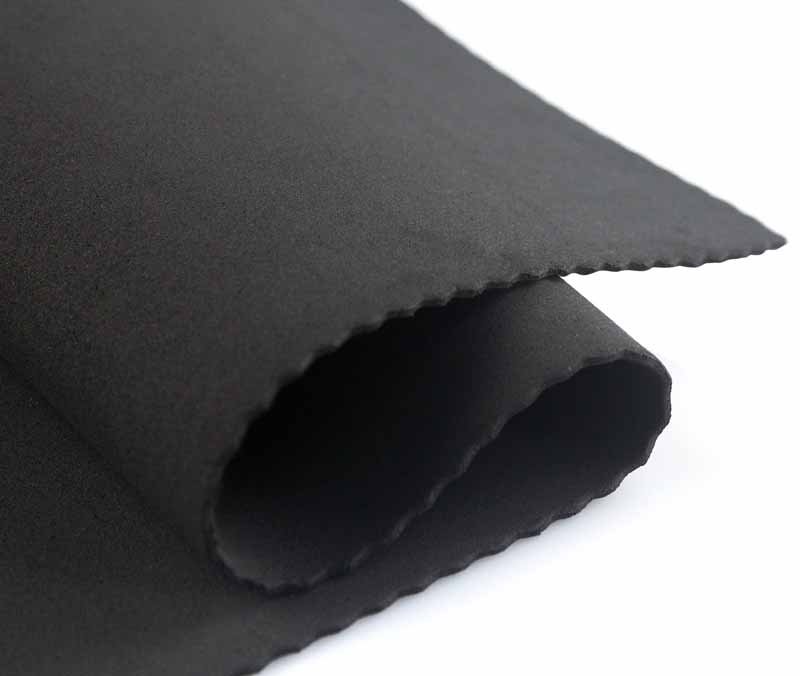
Neoprene product quality is ensured through rigorous testing, including stretch tests, water resistance checks, and durability assessments. Manufacturers use advanced technologies like ultrasonic testing and visual inspection to ensure the final product meets high standards for performance and aesthetics.
Quality control is a critical aspect of neoprene manufacturing. For products like neoprene bags and wetsuits, a multi-step approach ensures that only the highest-quality products reach customers. Here are the steps involved in quality control:
Material Inspection
- Quality control starts with inspecting the neoprene sheets for consistency. Checks for thickness, stretchability, and color ensure the material will meet performance standards.
Stretch and Durability Testing
- Neoprene is subjected to stretch tests to measure its elongation properties. Manufacturers test the material’s ability to stretch without compromising its integrity or elasticity, ensuring the product can withstand heavy use.
Water Resistance Tests
- Neoprene products like wetsuits undergo water resistance tests to ensure that they remain waterproof under extreme conditions. These tests measure how well the neoprene retains its insulating properties in wet conditions.
Seam Strength and Bonding Quality
- For products that require seams (like bags and wetsuits), manufacturers test the strength of the bonding methods. Ensuring that seams remain intact during stretching and use is crucial for product durability.
Final Product Inspection
- Every product undergoes a final inspection before it is shipped. This step ensures that all customizations—from logo placements to zippers and stitching—are up to standard.
By following a comprehensive quality control process, manufacturers ensure that the neoprene products are of the highest quality, meeting both functional requirements and aesthetic expectations.
Ready to Customize Your Neoprene Products?
At Szoneier, we specialize in custom neoprene manufacturing, providing high-quality products such as bags, wetsuits, koozies, and more. Whether you need custom designs, branding options, or unique features, we offer low MOQ and fast lead times to meet your business needs.
Contact us today for your custom neoprene product inquiries and discover how we can help bring your ideas to life!

